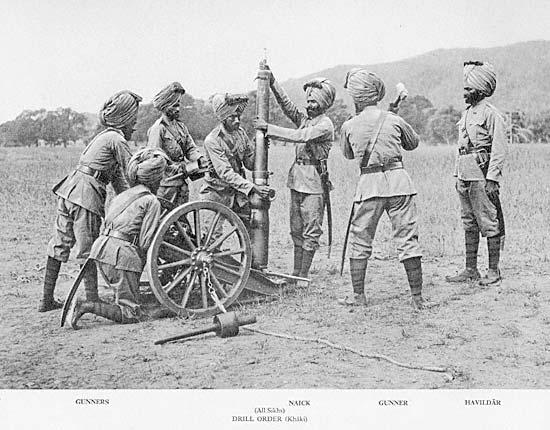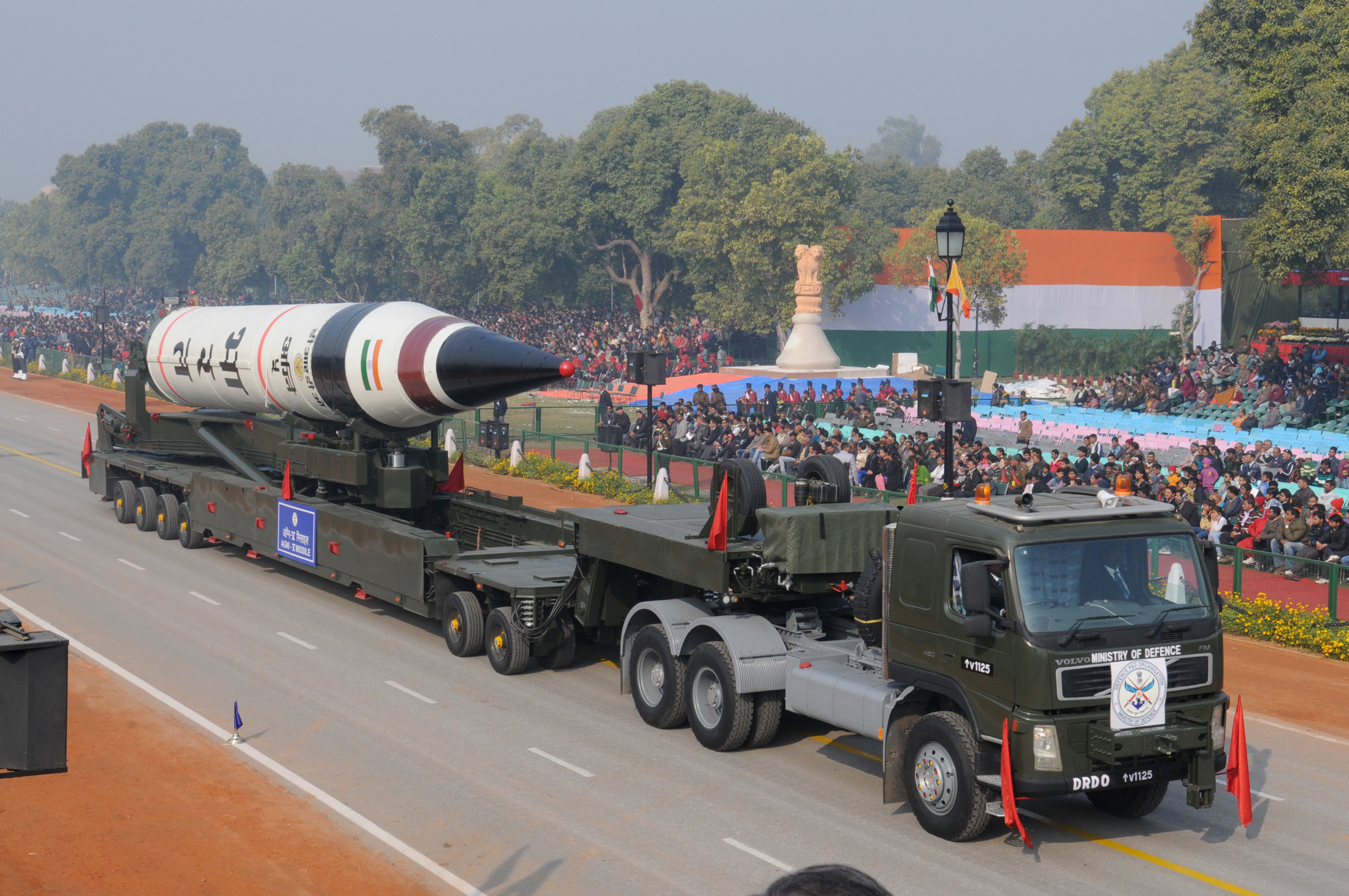|
DRDO
The Defence Research and Development Organisation (DRDO) (IAST: ''Raksā Anūsandhān Evam Vikās Sangaṭhan'') is the premier agency under the Department of Defence Research and Development in Ministry of Defence of the Government of India, charged with the military's research and development, headquartered in Delhi, India. It was formed in 1958 by the merger of the Technical Development Establishment and the Directorate of Technical Development and Production of the Indian Ordnance Factories with the Defence Science Organisation. Subsequently, Defence Research & Development Service (DRDS) was constituted in 1979 as a service of Group 'A' Officers / Scientists directly under the administrative control of Ministry of Defence. With a network of 52 laboratories that are engaged in developing defence technologies covering various fields like aeronautics, armaments, electronics, land combat engineering, life sciences, materials, missiles, and naval systems, DRDO is India's largest ... [...More Info...] [...Related Items...] OR: [Wikipedia] [Google] [Baidu] |
Indian Armed Forces
The Indian Armed Forces are the military forces of the Republic of India. It consists of three professional uniformed services: the Indian Army, Indian Navy, and Indian Air Force.—— Additionally, the Indian Armed Forces are supported by the Central Armed Police Forces, Assam Rifles, Indian Coast Guard and Special Frontier Force and various inter-service commands and institutions such as the Strategic Forces Command, the Andaman and Nicobar Command and the Integrated Defence Staff. The President of India is the Supreme Commander of the Indian Armed Forces but the executive authority and responsibility for national security is vested in the Prime Minister of India and their chosen Cabinet Ministers. The Indian Armed Forces are under the management of the Ministry of Defence of the Government of India. With strength of over 1.4 million active personnel, it is the world's second-largest military force and has the world's largest volunteer army. It also has the thi ... [...More Info...] [...Related Items...] OR: [Wikipedia] [Google] [Baidu] |
Nag Missile
The Nag missile (IAST: ''Nāga''; en: Cobra), also called "Prospina" for the land-attack version, is an Indian third-generation, all-weather, fire-and-forget, lock-on after launch, anti-tank guided missile (ATGM) with an operational range of 500m to 20km depending on variant. It has a single-shot hit probability of 90% and a ten-year, maintenance-free shelf life. The Nag has five variants under development: a land version, for a mast-mounted system; the helicopter-launched Nag (HELINA) also known as Dhruvastra; a "man-portable" version (MPATGM); an air-launched version which will replace the current imaging infra-red (IIR) to millimetric-wave (mmW) active radar homing seeker; and the Nag Missile Carrier (NAMICA) "tank buster", which is a modified BMP-2 infantry fighting vehicle (IFV) produced under license in India by Ordnance Factory Medak (OFMK). Development of the Nag is part of the Integrated Guided Missile Development Program (IGMDP), run by Defence Research and Developme ... [...More Info...] [...Related Items...] OR: [Wikipedia] [Google] [Baidu] |
Defence Research & Development Service
Defence Research & Development Service (DRDS) (Hindi: रक्षा अनुसंधान एवं विकास सेवा) is a Central Group 'A' Civil Service of the Government of India. DRDS scientists are Gazetted (Group A) defence-civilian officers under the Ministry of Defence. They are responsible for developing new technologies and military hardware for the Indian defence and security forces. History Defence Research and Development Organisation (DRDO) came into existence in 1958 by the merger of the Technical Development Establishment and the Directorate of Technical Development and Production with the Defence Science Organisation. DRDS was formed in 1979, and a separate Department of Defence Research and Development was created in 1980, which later on administered DRDO and its 52 laboratories/establishments. A senior DRDS scientist was made the Director General of DRDO, Scientific Adviser to the Raksha Mantri (Defence Minister of India) and ex officio Secret ... [...More Info...] [...Related Items...] OR: [Wikipedia] [Google] [Baidu] |
Trishul Missile
Trishul (IAST: triśūla "Trident") is a low-level quick-reaction short range surface-to-air missile developed in India by Defence Research and Development Organisation (DRDO) as part of the Integrated Guided Missile Development Programme (IGMDP). It can also be used as an anti-sea skimmer from naval ship against low flying missile, attack helicopter and aircraft. In 2008, Minister of Defence A. K. Antony officially announced the closure of the project on a written reply to Rajya Sabha after completion of Technology Demonstration (TD) phase. The development cost of Trishul Project was . History and development The Trishul missile project was commissioned in 1983 as a part of Integrated Guided Missile Development Programme. The primary objective was to produce short range surface to air missile with a reaction time below 6 seconds. In 1985, Trishul made its first unguided flight from Satish Dhawan Space Centre, Sriharikota. The missile made its first full range guided flight in ... [...More Info...] [...Related Items...] OR: [Wikipedia] [Google] [Baidu] |
Indian Air Force
The Indian Air Force (IAF) is the air arm of the Indian Armed Forces. Its complement of personnel and aircraft assets ranks third amongst the air forces of the world. Its primary mission is to secure Indian airspace and to conduct aerial warfare during armed conflict. It was officially established on 8 October 1932 as an auxiliary air force of the British Empire which honoured India's aviation service during World War II with the prefix ''Royal''. After India gained independence from United Kingdom in 1947, the name Royal Indian Air Force was kept and served in the name of Dominion of India. With the government's transition to a Republic in 1950, the prefix ''Royal'' was removed. Since 1950, the IAF has been involved in four wars with neighbouring Pakistan. Other major operations undertaken by the IAF include Operation Vijay, Operation Meghdoot, Operation Cactus and Operation Poomalai. The IAF's mission expands beyond engagement with hostile forces, with the IAF particip ... [...More Info...] [...Related Items...] OR: [Wikipedia] [Google] [Baidu] |
Akash Missile
Akash ( IAST: Ākāśa, ) is a medium-range mobile surface-to-air missile (SAM) system developed by the Defence Research and Development Organisation (DRDO) and produced by Bharat Dynamics Limited (BDL). Surveillance and Fire control radar, tactical control and command center and missile launcher are developed by Bharat Electronics (BEL), Tata Power Strategic Engineering Division and Larsen & Toubro.AKASH AIR DEFENSE WEAPON SYSTEM The Akash missile system can target aircraft up to away. It has the capability to neutralise aerial targets like fighter jets, cruise missiles and air-to-surface missiles as well as |
Advanced Numerical Research And Analysis Group
Advanced Numerical Research and Analysis Group (ANURAG) is a laboratory of the Defence Research and Development Organisation (DRDO). Located in Kanchanbagh, Hyderabad, it is involved in the development of computing solutions for numerical analysis and their use in other DRDO projects. History ANURAG was established on 2 May 1988, to development of indigenous supercomputer.later in 1991,ANURAG became a part of defense R&D Organization.support aeronautical design work,Defence Research Complex, Kanchanbagh, Hyderabad GlobalSecurity.org report on ANURAG. with the mandate of executing specific, time-bound projects leading to the development of custom designed computing systems and software packages for numerical analysis and other applications. As of 2020, it is ... [...More Info...] [...Related Items...] OR: [Wikipedia] [Google] [Baidu] |
Ministry Of Defence (India)
The Ministry of Defence (MoD) ( IAST: ''Rakshā Mantrālaya'') is charged with coordinating and supervising all agencies and functions of the government relating directly to national security and the Indian Armed Forces. The President of India is the ceremonial commander-in-chief of the armed forces of the country. The Ministry of Defence provides policy framework and resources to the armed forces to discharge their responsibility in the context of the defence of the country. The Indian Armed Forces (including Indian Army, Indian Air Force, Indian Navy) and Indian Coast Guard under the Ministry of Defence are primarily responsible for ensuring the territorial integrity of India. As of Statista, It is the List of largest employers, biggest employer in the world with 2.92 million employers. At present, the undergoing new creation of Indian National Defence University, National Defence University, for training of military officials and concerned civilian officials, will be admini ... [...More Info...] [...Related Items...] OR: [Wikipedia] [Google] [Baidu] |
Prithvi (missile)
Prithvi (Sanskrit: ''"Earth"'') is a tactical surface-to-surface short-range ballistic missile (SRBM) developed by Defence Research and Development Organisation (DRDO) of India under the Integrated Guided Missile Development Program (IGMDP). It is deployed by India's Strategic Forces Command. Development and history The Government of India launched the Integrated Guided Missile Development Program in 1983 to achieve self-sufficiency in the development and production of wide range of ballistic missiles, surface-to-air missiles etc. Prithvi was the first missile to be developed under the program. DRDO attempted to build a surface-to-air missile under Project Devil. Variants make use of either liquid or both liquid and solid fuels. Developed as a battlefield missile, it could carry a nuclear warhead in its role as a tactical nuclear weapon. Variants The Prithvi missile project encompassed developing three variants for use by the Indian Army, Indian Air Force and the Indian ... [...More Info...] [...Related Items...] OR: [Wikipedia] [Google] [Baidu] |
Agni Missile
The Agni missile (अग्नि IAST: Agni ''"Fire"'') is a family of Medium-range ballistic missile, medium to intercontinental ballistic missile, intercontinental range ballistic missiles developed by India, named after one of the Mahabhuta, five elements of nature. Agni missiles are long range, nuclear weapons capable, surface to surface ballistic missiles. The first missile of the series, Agni-I was developed under the Integrated Guided Missile Development Program (lGMDP) and tested in 1989. After its success, Agni missile program was separated from the GMDP upon realizing its strategic importance. It was designated as a special program in India's defence budget and provided adequate funds for subsequent development. , the missiles in the Agni series are being inducted into service. The family comprises the following: Agni-I The two-stage Agni technology demonstrator, with a solid-fuel first stage, was first tested at the Interim Test Range in Chandipur in 1989. It w ... [...More Info...] [...Related Items...] OR: [Wikipedia] [Google] [Baidu] |
Integrated Guided Missile Development Programme
The Integrated Guided Missile Development Programme (IGMDP) was an Indian Ministry of Defence programme for the research and development of the comprehensive range of missiles. The programme was managed by the Defence Research and Development Organisation (DRDO) and Ordnance Factories Board in partnership with other Indian government political organisations. The project started in 1982–83 under the leadership of Abdul Kalam who oversaw its ending in 2008 after these strategic missiles were successfully developed. On 8 January 2008, the DRDO formally announced the successful rated guided missile programme was completed with its design objectives achieved since most of the missiles in the programme had been developed and inducted by the Indian armed forces. History By the start of the 1980s, the DRDL had developed competence and expertise in the fields of propulsion, navigation and manufacture of aerospace materials based on the Soviet rocketry technologies. Thus, India's ... [...More Info...] [...Related Items...] OR: [Wikipedia] [Google] [Baidu] |
Aeronautical Development Establishment
Aeronautical Development Establishment is a laboratory of India's Defence Research and Development Organisation. Located in Bangalore, its primary function is research and development in the field of military aviation. Recent successful projects include Lakshya (an aerial target), Nishant (a reconnaissance unmanned aerial vehicle), Nirbhay Nirbhay (meaning ''Dauntless/Fearless'') is a long range, all-weather, subsonic cruise missile designed and developed in India by the Aeronautical Development Establishment (ADE) which is under Defence Research and Development Organisation (DR ...(a subsonic cruise missile), flight simulators for (LCA, Ajit, Kiran, Mig-21) and avionics packages for Tejas-LCA (display and FCC). It earlier worked on Sparrow (mini-uav) and Ulka (aerial target). History Aeronautical Development Establishment (ADE) was established in January 1959 at High Grounds, Bangalore. Technology divisions References External links {{DRDO Laboratories Defence ... [...More Info...] [...Related Items...] OR: [Wikipedia] [Google] [Baidu] |




